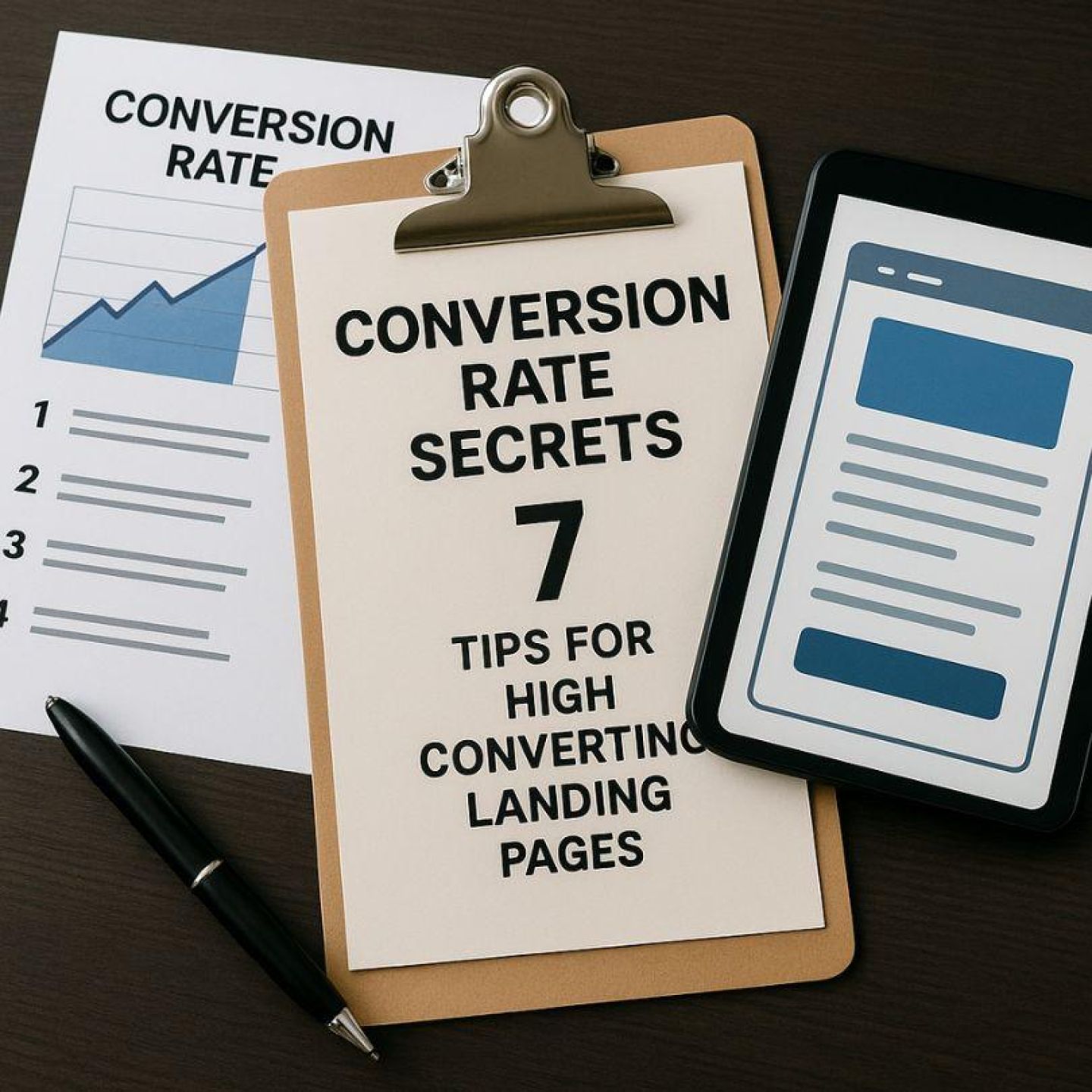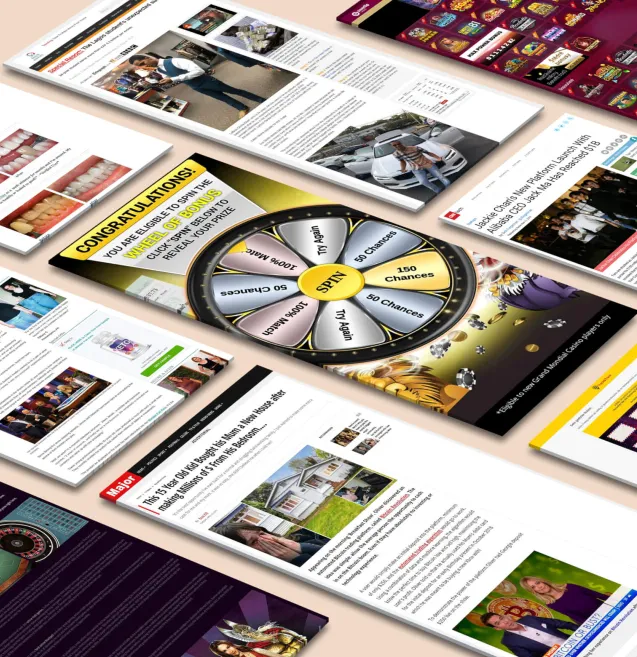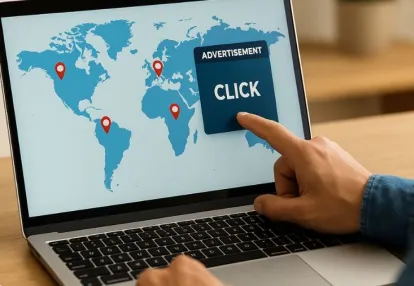
Our spy tools monitor millions of popup and pop-under from over 90+ countries and thousands of publishers.
Get StartedYou're driving pop traffic to your landing pages, but your conversion rates aren't where you want them to be. I've been there, and I know how frustrating it can be to watch visitors bounce without taking action.
Conversion rate optimization (CRO) for pop traffic isn't the same as optimizing for other traffic sources. Pop ads bring unique challenges—visitors arrive unexpectedly, often with lower intent, and you have mere seconds to convince them your offer is worth their attention. The difference between a 2% conversion rate and a 12% conversion rate can transform your entire campaign profitability.
This article shares 7 actionable conversion rate secrets specifically designed for high converting pop ad landing pages. These aren't generic tips you'll find everywhere. I'm focusing on landing page design strategies that work specifically for pop traffic, addressing the real challenges you face when converting this high-volume but potentially skeptical audience.
To help you visualize these strategies, here are some fantastic landing page examples that have successfully implemented these conversion secrets. You'll discover practical techniques you can implement today to turn more of your pop traffic into conversions.
Pop traffic comes from pop-up, pop-under, or tab-under advertisements that show up when users browse websites, click buttons, or interact with online content. These ads bring in a lot of traffic at a lower cost compared to traditional display or search advertising.
The behavior of pop ads traffic is quite different from other sources of traffic. Here's how it differs:
Unlike other types of ads where users actively seek out the offer, pop ads present a unique challenge. With pop ads, users usually don't have any prior knowledge or interest in the offer. This means that converting these visitors into customers requires a different approach.
To effectively address the characteristics of pop traffic, it's crucial to design your landing pages specifically for this audience. Here are some key considerations:
It's important to understand that standard landing page strategies may not be effective for pop ads. The nature of pop traffic requires faster engagement, clearer messaging, and stronger trust signals in order to convert this unique audience.
By tailoring your landing page design specifically for pop ads, you can increase your chances of capturing the attention and interest of these visitors, ultimately leading to higher conversion rates.
Your headline determines whether visitors stay or bounce within seconds. A clear headline pop landing page needs to communicate your offer's value proposition instantly—no guessing games, no vague promises. When someone clicks through from a pop ad, they're already skeptical. You have maybe three seconds to prove you're worth their time.
Message match pop ads demand that your landing page headline directly reflects what the ad promised. If your pop ad advertised "50% Off Premium Software," your landing page better lead with that exact offer, not a generic "Welcome to Our Platform" greeting. I've seen conversion rates double simply by ensuring the ad copy and landing page headline used identical language.
Concise messaging CRO means stripping away everything that doesn't serve your conversion goal. You don't need:
Every word on your page should guide visitors toward one action. Keep your headline under 10 words when possible. Use subheadings to support your main message, not introduce new concepts. Remove any element that creates visual noise or cognitive load—pop traffic visitors won't give you a second chance to make your point.
Your landing page needs one clear directive. When you present visitors with a single CTA landing page, you eliminate decision paralysis and guide them toward your focused conversion goal. Pop traffic users arrive unexpectedly—they didn't actively search for your offer. Multiple CTAs scatter their attention and create confusion about what action you actually want them to take.
I've tested landing pages with three different CTAs against pages with just one. The single-CTA version consistently outperformed by 40-60%. You're not giving visitors options; you're removing obstacles.
CTA optimization pop campaigns demands specificity. Instead of generic buttons like "Click Here" or "Submit," use action-oriented language that communicates value:
Notice how each CTA tells visitors exactly what happens next. The button color, size, and placement matter, but the copy drives action. You want visitors to understand the benefit they receive, not just the mechanical action they perform. Place your CTA prominently above the fold, and if your page extends beyond one screen, repeat it strategically without cluttering the design.
Mobile users make up the majority of pop traffic campaigns, usually representing 60-70% of all visitors. It's crucial for your mobile-friendly landing pages to provide immediate value before users decide to leave.
When implementing responsive design pop traffic strategies, it's important to have layouts that automatically adapt to any screen size. You cannot afford to have experiences where users have to pinch and zoom, as this will only frustrate them within seconds of arriving on your page. Make sure to test your landing pages on various devices, including compact smartphones and tablets, to ensure that buttons are still easily tappable and text remains readable without any manual adjustments.
In pop campaigns, the speed at which your mobile pages load can determine whether you succeed or fail. To achieve this, here are some key optimization techniques:
Remember, every second of delay in loading time can result in lost conversions. Therefore, it is essential to set a goal of having your pages load in under 2 seconds on 3G connections, as many mobile users still rely on slower networks.
Your landing page has seconds to capture attention from pop traffic visitors. Hero images pop ads serve as the visual anchor that either hooks visitors or sends them clicking away. You need high-resolution images or videos that directly relate to your offer—generic stock photos won't cut it when you're competing for attention from users who didn't necessarily choose to visit your page.
Engaging visuals CRO goes beyond static images. You can incorporate subtle animations that guide the eye toward your offer without creating distraction. A product slowly rotating, text fading in at strategic moments, or a background video showing your service in action—these elements add depth to your page. Hover effects on buttons or images create interactive landing page elements that reward curiosity while maintaining focus on your conversion goal.
The key balance: visual interest that enhances your message without overwhelming it. You want visitors engaged with your content, not mesmerized by flashy effects that pull attention away from your CTA. Test different media types to discover what resonates with your specific audience and offer combination.
Your landing page layout directly impacts how quickly visitors understand your offer and take action. A clean layout landing page with strategic white space usability CRO guides the eye naturally toward conversion elements without overwhelming visitors.
Above the fold content placement determines whether visitors engage or bounce immediately. Position your headline, value proposition, and primary CTA where visitors see them without scrolling. You're working with seconds—not minutes—to capture attention from pop traffic.
Strategic white space isn't wasted space. It creates breathing room around critical elements, making your message easier to digest. Dense, cramped layouts force visitors to work harder to find information, increasing cognitive load and reducing conversions.
For longer landing pages, repeat your CTA at natural intervals—after explaining key benefits or addressing objections. You want to provide conversion opportunities when visitors feel ready to act, not force them to scroll back up. Test CTA placement at 50%, 75%, and 100% scroll depth to identify optimal positioning.
The balance matters: enough CTAs to capture ready visitors, but not so many that your page feels pushy or desperate.
Pop traffic visitors arrive with minimal context about your brand, making testimonials trust building CRO essential for conversion success. You need to establish credibility within seconds, not minutes.
Social proof landing pages convert better when you display authentic customer testimonials near your primary CTA. Real names, photos, and specific results create believability—generic praise falls flat. You can feature star ratings, review snippets, or video testimonials that speak directly to visitor concerns about your offer.
Credibility elements pop campaigns benefit from include:
You'll notice the most effective trust signals match your specific offer. E-commerce landing pages need payment security badges, while software trials benefit from displaying active user counts. The key is strategic placement—trust elements should support your CTA without creating visual competition for attention.
You can't optimize what you don't measure. A/B testing landing pages transforms guesswork into data-driven decisions that consistently improve your conversion rates. I've seen campaigns jump from 3% to 8% conversions simply by testing different headline variations over a two-week period.
Start by testing one element at a time—headlines, CTAs, button colors, or hero images. Run each test until you reach statistical significance, typically requiring at least 100 conversions per variation.
Your analytics tools CRO optimization stack should include:
Heat maps reveal exactly where visitors click, how far they scroll, and which elements they ignore. I discovered through heat map analysis that visitors on one of my landing pages were clicking a non-clickable image repeatedly—turning it into a CTA button increased conversions by 23%.
Track these critical metrics:
Set up conversion funnels in your analytics platform to identify exactly where visitors drop off. You might find that 60% of users reach your CTA but only 15% click it—a clear signal to test different button copy or placement.
Create a testing calendar that cycles through different elements monthly. Test aggressive changes (completely different layouts) against incremental ones (button color variations) to discover which approach yields better results for your specific audience and offer type.
Building high converting landing pages for pop traffic comes down to mastering five essential pillars: clarity in your messaging, laser focus on a single conversion goal, mobile-first design, compelling visual engagement, and credible trust signals. You've seen how each element works together to transform casual visitors into committed customers.
The real secret? Your work doesn't stop after launching your landing page. The most successful marketers I know treat CRO strategies as an ongoing journey rather than a destination. You need to embrace continuous testing—experimenting with headlines, tweaking CTAs, refining layouts, and analyzing user behavior through heat maps and analytics.
Conversion Rate Secrets: Landing Page Design for Pop Traffic isn't about finding one perfect formula. It's about understanding your audience, removing friction points, and consistently optimizing based on real data. Start implementing these seven tips today, commit to regular testing, and watch your conversion rates climb. Your next breakthrough might be just one A/B test away.
Receive top converting landing pages in your inbox every week from us.
Tips & Tricks
Expanding your pop ad campaigns globally requires the right geo-targeting strategies. Explore five proven approaches to scaling pop ads across different regions while maintaining strong performance. Learn how to adapt creatives, timing, and messaging to match local audiences and cultural nuances. Perfect for advertisers ready to take their pop campaigns to an international level with confidence.
David Kim
7 minDec 11, 2025
How-To
Turn lost opportunities into sales with effective holiday remarketing using push ads. Learn how to re-engage shoppers who abandoned their carts through timely, personalized notifications. Discover proven strategies for crafting irresistible messages that drive action and recover revenue. Perfect for marketers aiming to boost conversions and maximize holiday season profits.
Elena Morales
7 minDec 10, 2025
How-To
AI is transforming the way advertisers approach pop campaigns in 2025. Discover how automation, predictive analytics, and real-time optimization can enhance targeting and boost engagement. Learn practical tips for creating smarter, high-performing pop ads that deliver measurable results. Perfect for marketers ready to stay ahead in the evolving world of AI-driven advertising.
Priya Kapoor
7 minDec 8, 2025




